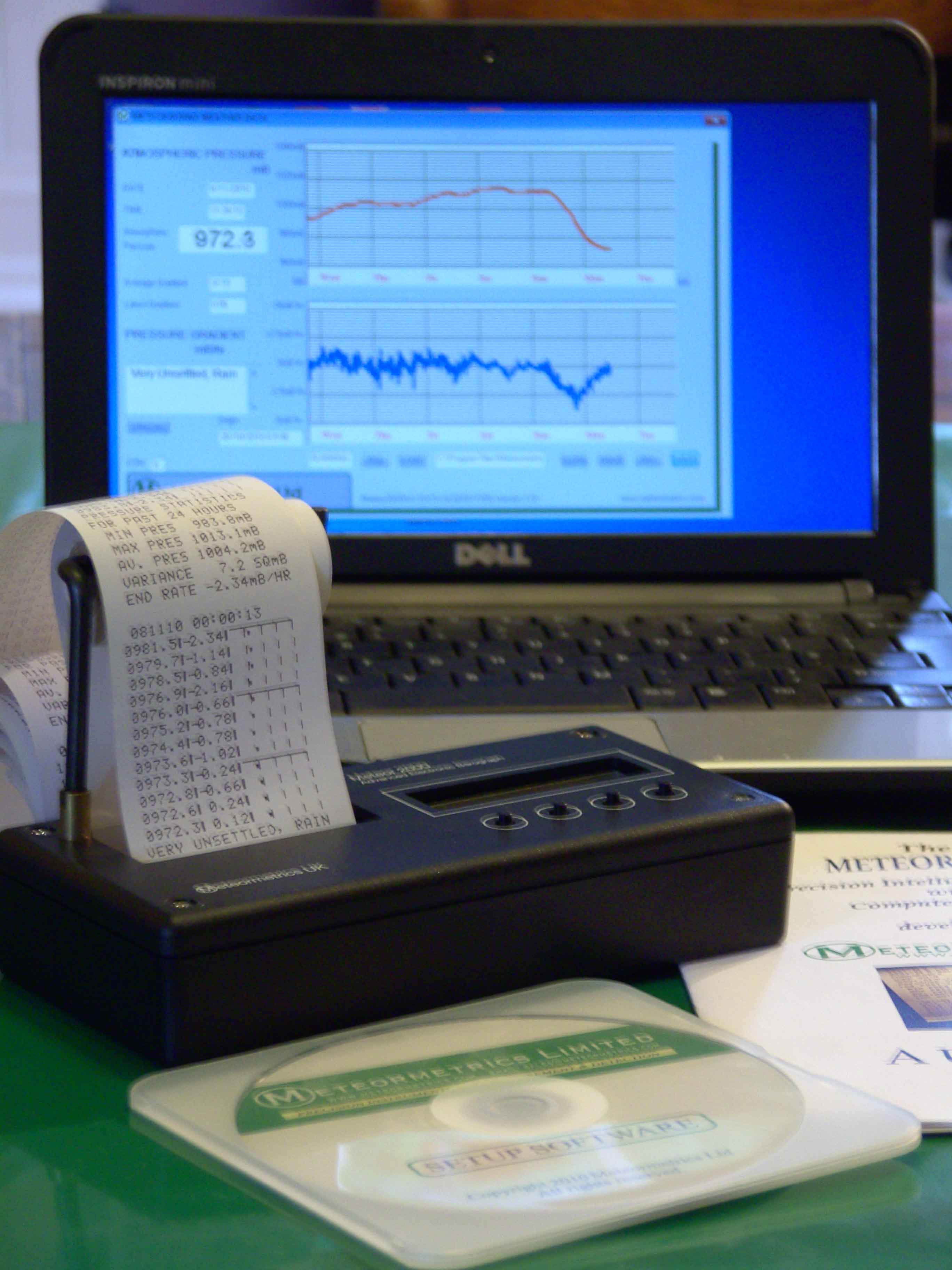
Specialising in custom-designed, precision scientific instruments, built, programmed and calibrated
to the most exacting standards. The range includes precision dataloging barographs,
with built-in statistical analysis, Barographic Transient Event Recorders
and computer-interfaced detectors and sensors
for environmental monitoring & process control.
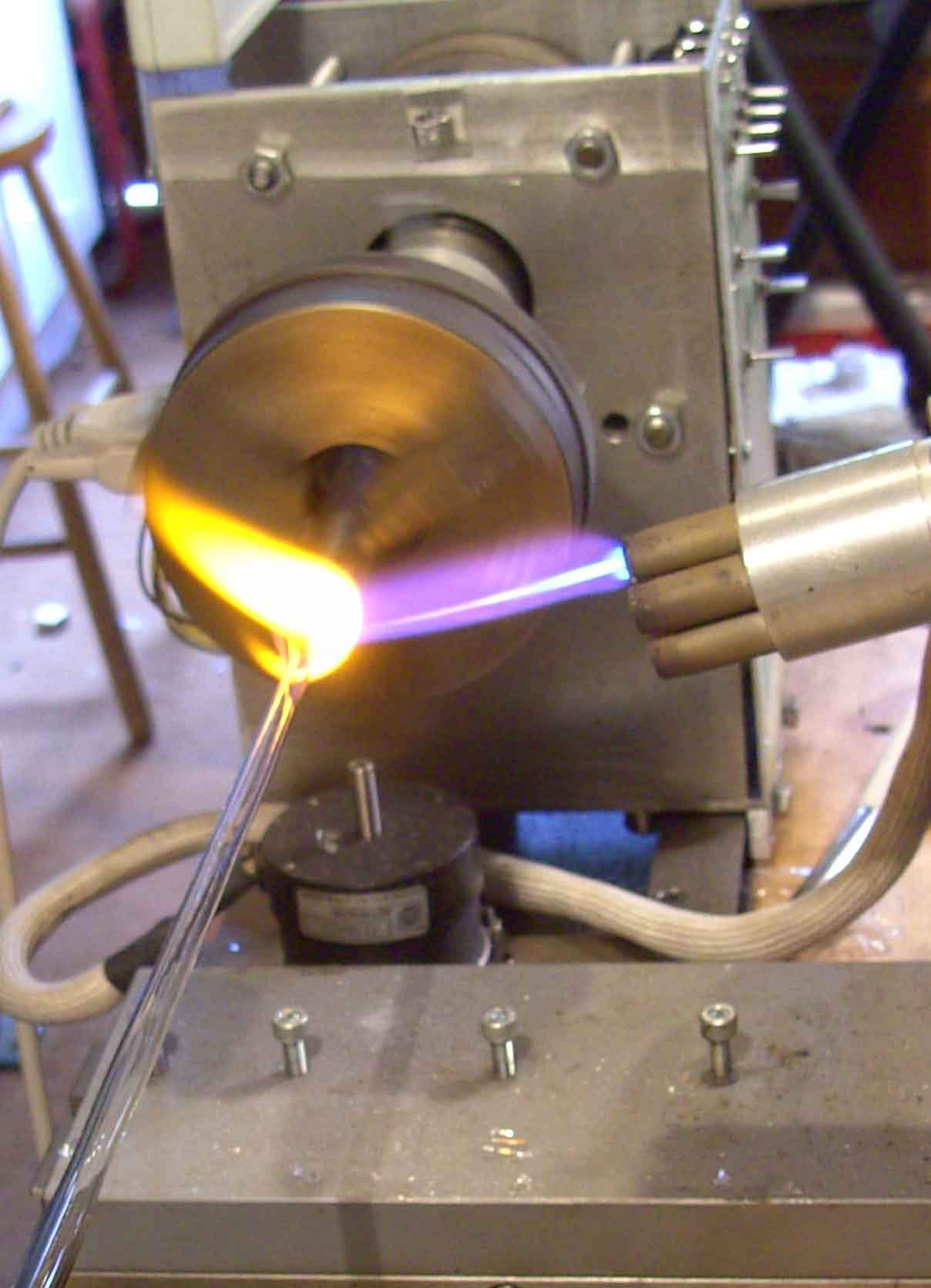
A site dedicated to scientific techniques, experimental methods, &
investigative tools for the inventor, researcher
and laboratory pioneer. Articles on glassblowing, electronics, metalcasting, magnetic
measurements with new material added continually. Check it out!
www.drkfs.net
The Flame Atomic Absorption Spectrometer
A diagram
of a Flame Atomic Absorption Spectrometer is shown in figure 11. The
light source is a cold cathode lamp that produces (almost
exclusively) the light that would be naturally emitted by the element
to be measured at a high temperature. A large range of such lamps are
available that includes the vast majority of the elements of general
analytical interest. Consequently, the light will contain
specifically those wavelengths that the element in the flame will
selectively absorb. The light passes through the flame, which is
usually rectangular in shape so as to provide an adequate path length
of flame for the light to be absorbed, and then into the optical
system of the spectrometer.
The flame
is fed with a combustible gas, customarily air/acetylene, nitrous
oxide/acetylene or air/propane or butane. The sample, dissolved in a
suitable solvent, is nebulized and fed into the gas stream at the
base of the burner. The light, having passed through the flame, can
be focused directly onto a photo-cell or onto a Diffraction Grating
by means of a spherical mirror. The Diffraction Grating can be made
movable, and so it can be set to monitor a particular wavelength that
is characteristic of the element being measured, or it can be scanned
to produce a complete absorption Spectrum of the sample. After
leaving the grating, light of a selected wavelength, or range of
wavelengths, is focused onto the photocell. The position of the
Diffraction Grating determines the wavelength of the light that is to
be monitored.

The flame
absorption spectrometer is fairly sensitive, and can be readily used
as a tandem instrument combined with a chromatograph, providing that
an appropriate interface is employed. A photograph of a Perkin Elmer
Flame Atomic Absorption Spectrometer is shown in figure 12.
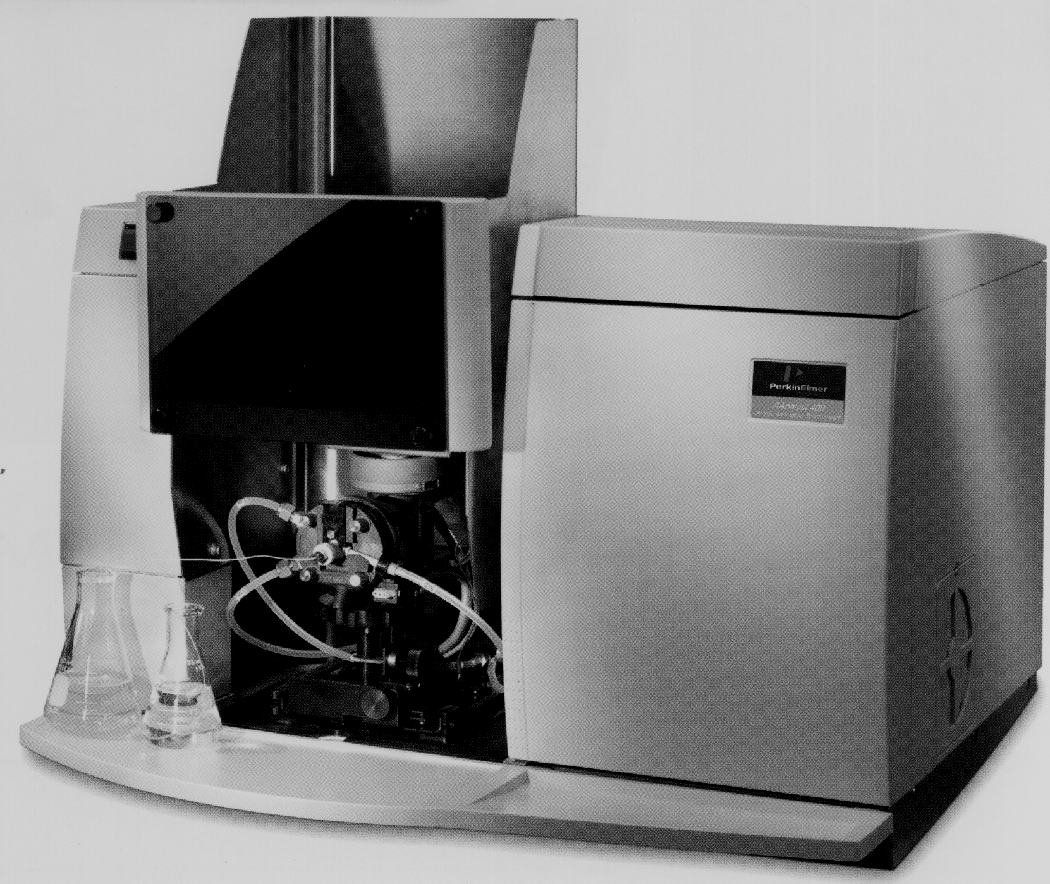
This
instrument is normally fitted with 4 different cold cathode lamps
and, thus, can examine 4 different elements, automatically, from the
same analysis; 8 lamp units are also available. A diagram of a hollow
cathode lamp is shown in figure 13.
The
cylindrical hollow cathode of the lamp contains one or more of the
elements of interest in the analysis. The cylindrical cathode is
screened from the anode connections by means of a ceramic cylinder
The anode is situated above the cathode and is made of tungsten or
nickel and the whole electrode system is enclosed in a glass
envelope. The glass envelope is filled with neon or argon to a
pressure of 1kPa and on applying a potential of 100 to 200 volts
across the electrodes a glow discharge is formed.
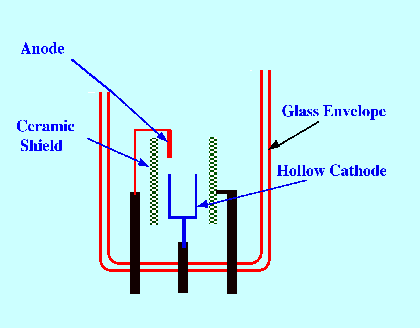
A simple
explanation of the process is as follows, Accelerated electrons from
the cathode collide with the gas atoms and produce ions. The ions are
accelerated to the cathode by the electric field and when they strike
the cathode surface the elements of interest are ejected from the
surface and are excited to provide radiation in the discharge
environment. These lamps can be combined in groups so that a given
instrument can determine a number of different elements by merely
switching the lamps.
A
photograph of four unit lamp mount is shown in figure 14. A single
lamp can be made to generate characteristic radiation for up to two
or three elements without interference problems. Modern atomic
adsorption spectrometers are deigned to provide extremely simple
operation, easy maintenance and, when required, fast and inexpensive
servicing. Many ancillary and alternative devices are available to
suit specific applications.
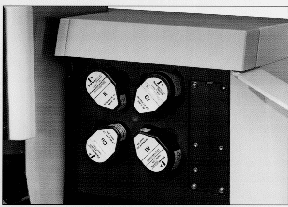
A number
of different sampling devices are available including very
sophisticated automatic samplers that allow instruments to be
operated 24 hours a day. An example of an automatic sampler that can
be used for atomic absorption spectrometers is shown in figure 15,
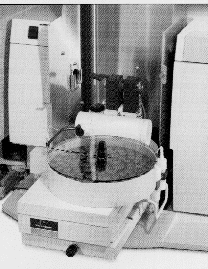
.
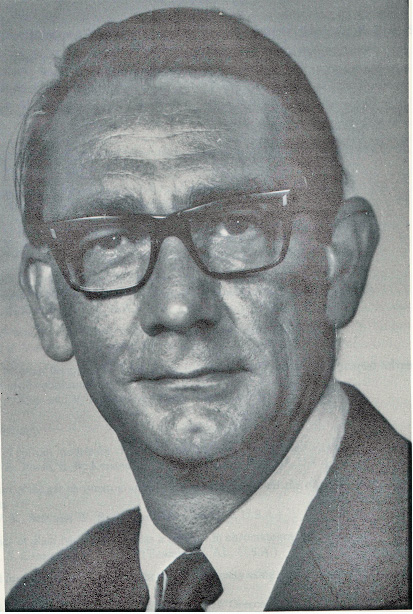
About the Author
RAYMOND PETER WILLIAM SCOTT was born on June 20 1924 in Erith, Kent, UK. He studied at the
University of London, obtaining his B.Sc. degree in 1946 and his D.Sc. degree in 1960.
After spending more than a decade at Benzole Producers, Ltd. Where he became head of
the Physical Chemistry Laboratory, he moved to Unilever Research Laboratories as
Manager of their Physical Chemistry department. In 1969 he became Director of Physical
Chemistry at Hoffmann-La Roche, Nutley, NJ, U.S.A. and subsequently accepted the position
of Director of the Applied Research Department at the Perkin-Elmer Corporation, Norwalk, CT, U.S.A.
In 1986 he became an independent consultant and was appointed Visiting Professor at Georgetown
University, Washington, DC, U.S.A. and at Berkbeck College of the University of London; in 1986
he retired but continues to write technical books dealing with various aspects of physical chemistry
and physical chemical techniques. Dr. Scott has authored or co-authored over 200 peer reviewed
scientific papers and authored, co-authored or edited over thirty books on various aspects of
physical and analytical chemistry. Dr. Scott was a founding member of the British chromatography
Society and received the American Chemical society Award in chromatography (1977), the
M. S. Tswett chromatography Medal (1978), the Tswett chromatography Medal U.S.S.R., (1979),
the A. J. P. Martin chromatography Award (1982) and the Royal Society of Chemistry Award in
Analysis and Instrumentation (1988).
Dr. Scott’s activities in gas chromatography started at the inception of the technique,
inventing the Heat of Combustion Detector (the precursor of the Flame Ionization Detector),
pioneered work on high sensitivity detectors, high efficiency columns and presented fundamental
treatments of the relationship between the theory and practice of the technique.
He established the viability of the moving bed continuous preparative gas chromatography,
examined both theoretically and experimentally those factors that controlled dispersion
in packed beds and helped establish the gas chromatograph as a process monitoring instrument.
Dr. Scott took and active part in the renaissance of liquid chromatography,
was involved in the development of high performance liquid chromatography and invented
the wire transport detector. He invented the liquid chromatography mass spectrometry
transport interface, introduced micro-bore liquid chromatography columns and used them
to provide columns of 750,000 theoretical plates and liquid chromatography separations
in less than a second.
Dr. Scott has always been a “hands-on” scientist with a remarkable record of accomplishments in chromatography ranging from hardware design to the development of fundamental theory. He has never shied away from questioning “conventional wisdom” and his original approach to problems has often produced significant breakthroughs.







